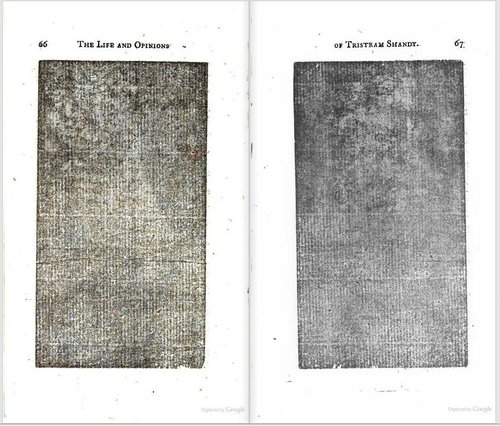
I knew vaguely of Laurence Sterne’s The life and opinions of Tristram Shandy, Gentleman‘s importance, and I did see Michael Winterbottom’s wild 2005 film adaptation, but I’ve never read the book itself. So HOLY SMOKES, PEOPLE, Mourning Pages!
Sterne wrote and designed Tristram Shandy [1759] not just as a story, but very much as a reading experience. Which is why the death of the parson Yorick in Vol. I is followed by a page printed solid black. It’s usually called [by Shandyheads] The Black Page.
But as Duke comp lit PhD candidate/blogger Whitney explains, it’s most typically called a mourning page, and Tristram Shandy is the first time a mourning page was deployed in fictional writing.

Lachrymae, 1613, Joshua Sylvester, image via folger.edu
Whitney has pulled together an incredible assortment of mourning pages, which usually appeared at the beginning of a book as a memorial to a deceased king or the author’s patron.
They sometimes had text or a crest, or designs or illustrations, but a solid monochrome monolith of black was not unheard of. Except, of course, by me.
In 2009 the Laurence Sterne Trust organized an exhibition titled, The Black Page, for which they solicited 73 artists to create their own interpretation of the black page. The artists ranged from John Baldessari to Kenneth Goldsmith to Lemony Snicket.
I think that by now, three+ years later, the artificial suspense has played out, and the Trust can go ahead and reveal the identities of the artists of each work on their little blog.
Diapsalmata: Tristram Shandy & the art of black mourning pages [whitneyannetrettien via bibliodyssey, I think]
The Black Page [blackpage73.blogspot.com]
Skip to content
the making of, by greg allen
